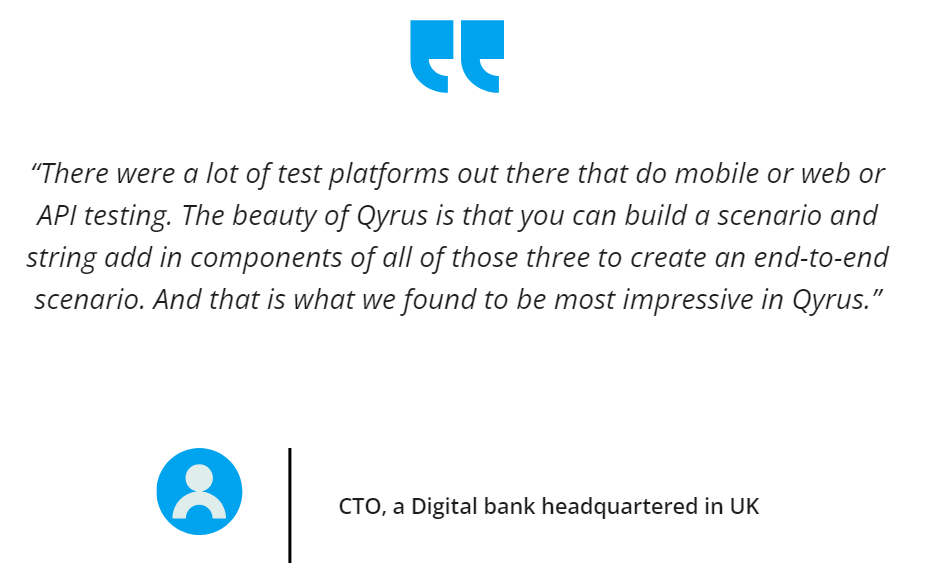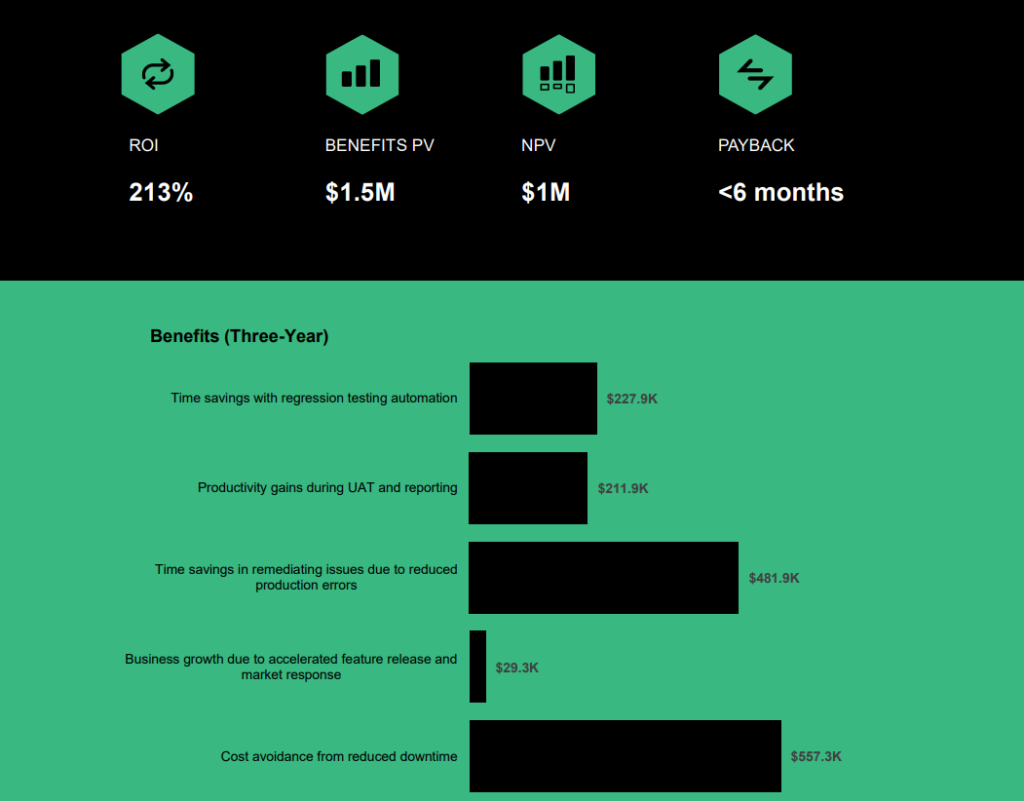Accelerate IT operations with AI-driven Automation
Automation in IT operations enable agility, resilience, and operational excellence, paving the way for organizations to adapt swiftly to changing environments, deliver superior services, and achieve sustainable success in today's dynamic digital landscape.
Driving Innovation with Next-gen Application Management
Next-generation application management fueled by AIOps is revolutionizing how organizations monitor performance, modernize applications, and manage the entire application lifecycle.
AI-powered Analytics: Transforming Data into Actionable Insights
AIOps and analytics foster a culture of continuous improvement by providing organizations with actionable intelligence to optimize workflows, enhance service quality, and align IT operations with business goals.
“Did you know? According to Adenza, the use of CATT can decrease test execution times by up to 70%”
In today’s rapidly evolving software landscape, the pressure to deliver high-quality applications at breakneck speed is immense. Test automation—a game-changing approach that promises to streamline the testing process, reduce human error, and ensure faster releases. But despite its myriad benefits, why do many organizations still hesitate to fully embrace it? The truth is test automation is often shrouded in myths and fraught with challenges that deter teams from leveraging their full potential.
Did you know that while 87% of organizations consider test automation crucial for their software development lifecycle, only 23% have successfully automated more than half of their testing? This staggering gap between recognition and implementation highlights the barriers that continue to hold companies back. The fear of high costs, concerns about maintenance complexity, and the misconception that automation will replace manual testers are just a few of the myths that perpetuate this hesitation.
But what if we could demystify these concerns? What if we could break down these barriers and pave the way for a smoother, more effective adoption of test automation? In this blog, we’ll explore the top 7 challenges and myths in test automation and provide actionable strategies to overcome them.
1. Myth: Test Automation Is a One-Time Effort
Challenge: One of the most pervasive myths about test automation is that it’s a one-time effort. Many teams believe that once they’ve set up their automated tests, they can simply run them repeatedly without further intervention. This misconception leads to a lack of maintenance and eventually, a suite of tests that fail to reflect the evolving software, leading to false positives and negatives.

Solution: To overcome this, it’s essential to establish a robust test management strategy. This includes regular reviews and updates to your test cases, integrating them with CI/CD pipelines, and utilizing version control for test scripts. Additionally, adopting AI and machine learning techniques can help in auto-healing test scripts, significantly reducing the maintenance overhead.
2. Myth: 100% Test Automation Is Achievable
Challenge: The idea of achieving 100% test automation is alluring, but it’s also one of the biggest myths in software testing. Striving for full automation can lead to wasted resources and neglect of critical exploratory testing, which is vital for uncovering unknown issues.

Solution: Focus on automating high-value test cases—those that are time-consuming, repetitive, and prone to human error. Complement automation with manual testing to cover the more complex and exploratory aspects of testing. A balanced approach ensures thorough coverage without over-reliance on automation.
3. Myth: Automation Testing is Cost-Effective from Day One
Challenge: Many believe that test automation leads to immediate cost savings. However, the initial investment in tools, infrastructure, and skilled personnel can be substantial, and the ROI is not always immediate.

Solution: To ensure a positive ROI, start small and scale gradually. Prioritize automating test cases that provide the most significant return on investment. Regularly measure and track your automation efforts’ impact on time-to-market, bug detection, and overall quality to justify continued investment.
4. Myth: Automated Tests are Infallible
Challenge: There’s a misconception that automated tests are always accurate and that if a test passes, the functionality is error-free. This can lead to a dangerous complacency, where teams overlook the possibility of issues within the test scripts themselves.

Solution: Regularly review and validate your test scripts. Implement peer reviews for test case design and use code quality tools to catch errors in test scripts early. Additionally, consider using a combination of different testing methods, such as unit, integration, and end-to-end testing, to ensure comprehensive coverage.
5. Myth: Test Automation Tools Can Be Used Right Out of the Box
Challenge: Many teams believe that once they’ve selected a testing automation tool, they can start automating immediately without any customization. This often leads to frustration when the tool doesn’t fit seamlessly into their existing processes.
Solution: Invest time in thoroughly evaluating and customizing your chosen test automation tools. Ensure that the tool integrates well with your existing tech stack and that your team is adequately trained to use it effectively. Consider open-source tools if you need more flexibility, and don’t hesitate to modify or extend the tool’s capabilities to better suit your requirements.
6. Myth: Test Automation Eliminates the Need for Skilled Testers
Challenge: There’s a growing belief that as automation becomes more advanced, the need for skilled testers diminishes. This myth can lead to underinvestment in training and development for testing teams.
Solution: Invest time in thoroughly evaluating and customizing your chosen test automation tools. Ensure that the tool integrates well with your existing tech stack and that your team is adequately trained to use it effectively. Consider open-source tools if you need more flexibility, and don’t hesitate to modify or extend the tool’s capabilities to better suit your requirements.
7. Myth: Automation Testing Equals Faster Time-to-Market
Challenge: While automation is often touted as the key to speeding up release cycles, many organizations find it can slow down development if not implemented correctly. Poorly designed automation strategies can lead to bottlenecks, false positives, and lengthy debugging sessions.
Solution: To truly accelerate time-to-market, focus on optimizing your test automation strategy. Use parallel testing, cloud-based testing platforms, and continuous integration/continuous deployment (CI/CD) pipelines to run tests more efficiently. Regularly review and refine your test suite to eliminate redundant or slow tests and prioritize the automation of critical path scenarios that directly impact release timelines.
Understanding the Total Economic Impact™ Study

Key Findings from the TEI of Qyrus Study: A Closer Look
Key Findings from the TEI of Qyrus Study: A Closer Look
Forrester’s TEI framework can help organizations evaluate the impact of a testing solution like Qyrus by examining four key areas: cost, benefit, flexibility, and risk. This end-to-end approach ensures that all potential impacts are considered, providing a clear picture of the return on investment.
- Cost: Implementing an advanced testing platform incurs costs, including licensing, integration, and ongoing management. However, the time savings and efficiency gains achieved through automation can offset these costs. For example, the reduction in manual testing efforts and the streamlined reporting process can lead to significant productivity gains. With average fully burdened hourly rates for software developers and QA testers at $55 and $36 respectively, these efficiencies translate into substantial cost savings.
- Benefit: The primary benefit of a solution like Qyrus is its ability to maintain high quality and reliability in software products. By reducing defects and minimizing incidents, organizations can improve product stability and customer satisfaction. The TEI report showed that Qyrus reduced defects and incidents by up to 80%, highlighting its effectiveness in delivering high-quality outcomes.
- Flexibility: A flexible testing platform is crucial for adapting to changing business needs. As organizations scale or shift their focus, the ability to quickly adapt testing processes is vital. Qyrus provides this flexibility, allowing companies to tailor their testing approaches to meet specific requirements without sacrificing efficiency or quality.
- Risk: Every investment comes with risk, but advanced testing platforms help mitigate these risks by identifying potential issues early. By catching problems before they reach production, Qyrus helps prevent costly downtime and protects the organization’s reputation. The time savings in incident fixes, as highlighted in the TEI report, further emphasize how proactive issue detection can lead to fewer disruptions and more stable operations.
- Cost Avoidance from Reduced Downtime: Qyrus’s AI-driven detection capabilities prevent 50% of incidents from entering production, leading to cost savings of $557,000 by avoiding downtime.

The Strategic Advantage of Qyrus
Qyrus exemplifies how an advanced testing platform can transform an organization’s approach to software development. The TEI report on Qyrus highlighted several areas of impact:
- Facilitating Growth and Innovation: By optimizing testing processes, Qyrus frees up resources that can be redirected towards innovation. This is crucial for organizations looking to stay competitive and capitalize on new opportunities. The ability to quickly and efficiently bring new features to market allows businesses to respond to customer needs and industry trends, driving growth and long-term success.
- Improved Business Growth and Market Response: Qyrus contributes to broader business objectives, particularly in terms of growth and market agility. Faster time-to-market capabilities allow organizations to be more responsive to market trends and customer feedback, providing a significant competitive advantage. Consistently delivering high-quality products and responding swiftly to customer needs enhances customer satisfaction and loyalty, driving revenue growth and opening new revenue streams.
3. Advanced Reporting and Analytics
Wrap Up
In a world where speed and quality are paramount, overcoming the challenges and dispelling the myths surrounding test automation is essential for any organization looking to stay competitive. By addressing these barriers head-on, you can unlock the full potential of automation, driving efficiency, reducing time-to-market, and improving product quality.
At Quinnox, we understand the complexities of test automation and have the expertise to guide you through this journey. Our tailored solutions are designed to meet your specific needs, ensuring that your automation efforts are not only successful but also sustainable in the long term.
Whether you’re just starting out or looking to optimize your existing processes, Quinnox is here to help you break through the barriers and achieve true automation excellence. Let’s collaborate to transform your testing strategy and set your team up for success.
Reach out to us today to learn more about how we can support your automation journey.



